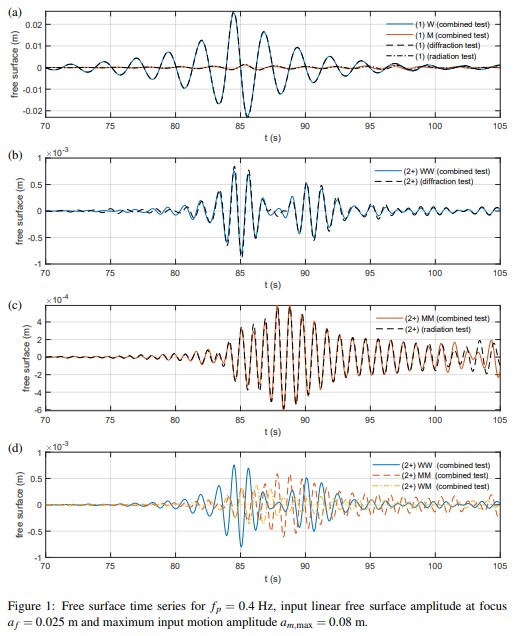The Challenge
Low-cost wave energy production is governed by the WEC’s ability to operate at maximum efficiency in the ever-changing ocean environment. Power is force multiplied by velocity, and both need to be optimised for best WEC efficiency. In this project, better ways to predict wave forces on WECs oscillating with optimum (large) velocity will be developed. The ideal WEC operational window is broad – from short choppy wind seas to long swell waves – ensuring power production even as weather patterns and seasons change. Moreover, real-time control comprising instantaneous fine-tuning of the power take-off settings delivers increased energy absorption from each passing wave.
Successful design of a WEC thus requires realistic predictions of device motions, power output and the corresponding forces experienced by all parts of the WEC system in varying ocean conditions.
Computational efficiency of numerical models is critical in the following areas:
- Early design stages, where numerous iterations of the WEC geometry need to be tested in a wide range of wave conditions
- Deriving estimates for fatigue and (approximate) extreme loading in the detailed design process.
- Real-time control in operating devices, where rapid WEC response calculations are needed based on the approaching waves which will reach the device in the next 30 seconds or so.
Existing models were originally developed to meet the needs of the offshore oil and gas industry for structures where equipment and/or other fixtures were to remain largely motionless to allow safe operations on deck. On the other hand, WECs are designed to move in response to waves – the large wave-induced oscillatory motions drive the power take-off which converts mechanical energy into electricity.
Relying on traditional linear wave structure interaction models, which are unable to satisfactorily capture the dynamic effects associated with large body motions, has negative cost implications in terms of compromised performance and higher design safety margins. The challenge for wave energy lies in deriving new modelling tools able to take WEC motions into account with minimal additional computational cost.
Project Approach
Motions, or other responses of offshore structures, can be categorised as wave-frequency, high-frequency and slow-drift (including mean-drift). Typical ocean wave frequencies are 0.05 – 0.25 Hz, corresponding to wave periods of 4 – 20 s. Wave energy converters are designed to operate in resonance with the incident waves, and as such undergo large-amplitude wave-frequency oscillations. This project focuses primarily on nonlinear behaviour of WECs in the wave-frequency range, which is most relevant to power capture. The high-frequency and slow-drift responses, in general excited through nonlinear mechanisms, are also studied as they effect the overall dynamics of the system.

Aim 1: Understand nonlinear WEC dynamics.
Planning and execution of high-precision bespoke model-scale wave flume experiments designed to isolate nonlinear dynamic features through careful post-processing and analysis of the data.
Aim 2: Improve accuracy of models and performance of controllers.
Identification of dominant nonlinear hydrodynamic effects from the laboratory measurements. Establishing methodology for their simplified representation in efficient partially nonlinear numerical models.
Aim 3: Validate using field data.
Simulation of WEC behaviour and evaluation of the nonlinear modelling strategies through a unique comparison with CorPower Ocean (CPO)’s fully instrumented full-scale ocean deployment. Quantification of improvements.
Aim 4: Communicate broadly.
Knowledge sharing throughout the project with the whole sector via academic and industry conferences, webinars, published thought pieces, and journal publications.
Timeline
Project Start – 2022
Project Completion – 2024










